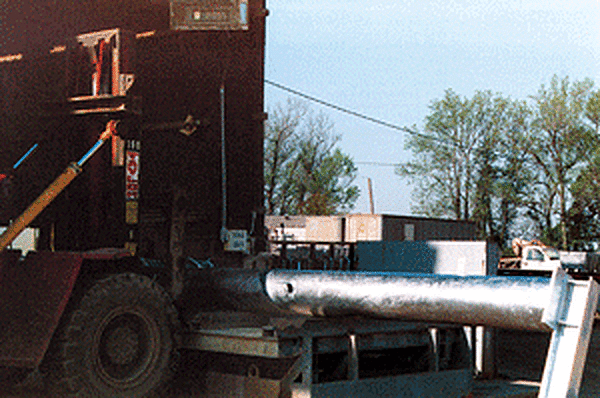Weight Increase

In the galvanizing process, all surfaces are coated with corrosion-inhibiting zinc. Coating the steel also adds weight and in certain instances the increased weight can become a factor during shipping and handling. On average, the galvanized coating increases the weight of black steel up to 15% depending on a host of factors, including type of steel, shape, size, steel chemistry, surface conditions (i.e. surface preparation), steel thickness, galvanizing temperature, and other galvanizing process parameters.
The following table summarizes the coating thicknesses versus the weight of the steel, and shows the expected increase in weight from the galvanized coating. The table also shows the overall weight will increase with thinner coatings if the steel surface area to weight ratio increases. This can cause the coating thickness to no longer have a dramatic impact on the total weight of the galvanized steel.
Summary of Various Coating Thicknesses versus Weight
| Coating Thickness | Steel Mix | Total Added Zinc Weight (lbs) | % Increase in Black Steel Weight | ||
|---|---|---|---|---|---|
| Mils | oz./ft2 | Type | ft2/ton | (lbs) | % |
| 3.0 | 1.7 | Light Truss | 500 | 990 | 2.60 |
| 7.0 | 3.9 | Reactive Light Truss (x) | 500 | 2309 | 6.08 |
| 4.0 | 2.2 | Typical Mix Size/Shapes | 250 | 660 | 1.74 |
| 9.0 | 5.0 | Typical Mix Size/Shapes (x) | 250 | 1484 | 3.91 |
| 5.0 | 2.8 | Heavy Structural | 100 | 330 | 0.87 |
| 12.0 | 6.7 | Heavy Structural (x) | 100 | 792 | 2.08 |
| (x) = Reactive All examples assume 38,000 (19 ton) job size | |||||
For example, a light gauge truss assembly designed with 500 ft2/ton steel pieces with thickness between 1/8" and 3/16" fabricated in pieces to accommodate shipping and galvanizing, with 38,000 lbs (19 tons) of pieces shipped to the galvanizer in one truckload would have 2.6% weight added due to the galvanized coating. (This is calculated by assuming the minimum coating thickness as required by ASTM A123 of 3 mils (1.7 oz/ft2 is picked up during galvanizing.) So, the fabrication now has a total weight of 38,990 lbs, which is an acceptable shipping weight on most roads (typical 40,000 lbs limit). However, if the steel contains elevated amounts of silicon or phosphorus, which can produce an average coating thickness of 7 mils, the added weight of zinc would be just over 6%, making the total weight 40,309 lbs - exceeding the shipping limits.
In addition to creating issues with shipping, the increased weight is also improtant when calculating load requirements for supports and assemblies, and impacts cost as galvanizers typically quote prices according to their zinc consumption. Specifying steels with the proper chemistries can save both you and the galvanizer money, while not increasing the weight of the steel to levels that are not acceptable to ship in one truckload or have a larger impact on load requirements.
